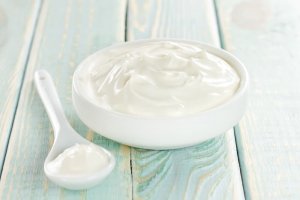
A low FODMAP diet can be recommended by a healthcare professional when someone is experiencing abdominal pain, discomfort, gas, bloating, diarrhea and/or constipation. Developed in 2005 by a group of researchers at Monash University, this elimination diet has been used by physicians for nearly 20 years, primarily, for the treatment of irritable bowel syndrome (IBS).
All foods we eat are divided into three broad categories, called macronutrients, which are proteins, carbohydrates and fats. FODMAPs (an acronym for fermentable oligosaccharides, disaccharides, monosaccharides and polyols) fall under the carbohydrate category. The researchers at Monash University found that foods containing certain size carbohydrate molecules are not always digested by the body and can cause abdominal discomfort and pain. Those carbohydrate molecules were identified as FODMAPs. Therefore, reducing high FODMAP foods in your diet can significantly improve symptoms of IBS.
Some examples of FODMAPs in food include:
- Fructose: a monosaccharide found in varying amounts in fruit but particularly high in apples, pears, and honey
- Lactose: a disaccharide found in milk and other dairy products
- Fructans and galactans:, both oligosaccharides found in onions and garlic
- Polyols, also called sugar alcohols, including sorbitol, xylitol, erythritol, lactitol, mannitol, maltitol and isomaltitol; often found in “sugar free” or reduced calorie foods.
Many people who follow the low FODMAP diet have relief from their symptoms when they adhere to a specific, phased diet that is recommended by their registered dietitian. Because the diet is restrictive, it is not meant to be continued long term, and should always be followed under medical supervision. A registered dietitian can guide you through the steps to effectively implement the diet and eat enough calories to get important nutrients while minimizing belly discomfort, pain or unnecessary weight loss. The goal is to help you experience symptom relief and transition off the diet in steps that allow you to add more variety back to your diet.
Check out our collection of low FODMAP recipes to get you started. Your kitchen awaits your exploration, your taste buds will be delighted, and your gut will thank you.
Below are lists of foods high in FODMAPS and foods generally low in FODMAPS. If you have been asked to follow a low FODMAP diet, you can use this as a reference, avoiding/limiting foods high in FODMAPs and including foods low in FODMAPs. Ask your health care provider for a more detailed understanding of how to use this for your needs.
Foods high in FODMAPs
- Vegetables: asparagus, artichokes, cauliflower, garlic, mushrooms, onion, sugar snap peas
- Fruit: apples, cherries, mangos, nectarines, peaches, pears, plums, watermelon, dried fruits (prunes, etc.)
- Dairy and non-dairy alternatives: cashew milk, cow milk, goat milk, ice cream, sheep milk, soymilk yogurt, soft cheeses
- Grains: wheat, barley, rye
- Legumes and pulses: beans (except those listed in the low FODMAP section), chickpeas (sprouted), red lentils
- Nuts and seeds: cashews, pistachios
- Sugars and sweeteners: agave, honey, carob powder, artificial sweeteners (mannitol, sorbitol, xylitol), high fructose corn syrup
Foods low in FODMAPs
- Vegetables: Bok choy, bell peppers, carrots, cucumber, eggplant, green beans, lettuce, radish, parsnips, potato, tomato, zucchini (in limited amounts)
- Fruit: bananas, blueberries, cantaloupe (in limited amounts), grapes, kiwi, oranges, pineapples, raspberries, strawberries (in limited amounts)
- Dairy and non-dairy alternatives: almond milk, lactose- free milk, hard cheeses
- Proteins: meats, seafood, poultry, eggs, tofu, tempeh
- Grains: gluten- free breads, gluten- free pastas, oats, quinoa, rice, sourdough spelt bread
- Legumes and pulses: black beans (in limited amounts), chickpeas (canned, in limited amounts), green lentils (in limited amounts), mung bean sprouts
- Nuts and seeds: almonds, hazelnuts, macadamia nuts, peanuts, pecans, pine nuts, pumpkin seeds, walnuts
- Sugars and sweeteners: dark chocolate, maple syrup, rice malt syrup, table sugar
Additional References & Resources:
Monash University: The Low FODMAP Diet












Reviews & Comments
No reviews yet.
Leave a Review or Comment